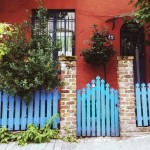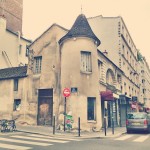
In the dappled light coming through the trees, a jovial bohemian crowd have gathered to dance and dally at the Moulin de la Galette, one of the many windmills that originally stood at the northern tip of Paris. By the time Renoir’s famous painting had captured the scene in 1876, the unlikely venue was already a centre piece for the artistic crowd who had found themselves in Montmartre at the end of the 19th century. That very year, Renoir had setup in a small workshop within the heart of the hilltop village that was still not yet considered a part of Paris. He painted his own friends into the picture, including his lover, Margot, but on any given day, you might have run into Pablo Picasso, Henri Matisse, Edgar Degas, Toulouse-Lautrec and later, Gertrude Stein, Ernest Hemingway and F. Scott Fitzgerald. A humble flour mill turned epic village fête, it was a non-stop party during the Belle Epoque at the Moulin de la Galette, and thankfully, there are the postcards (and a few paintings you make know) to prove it.
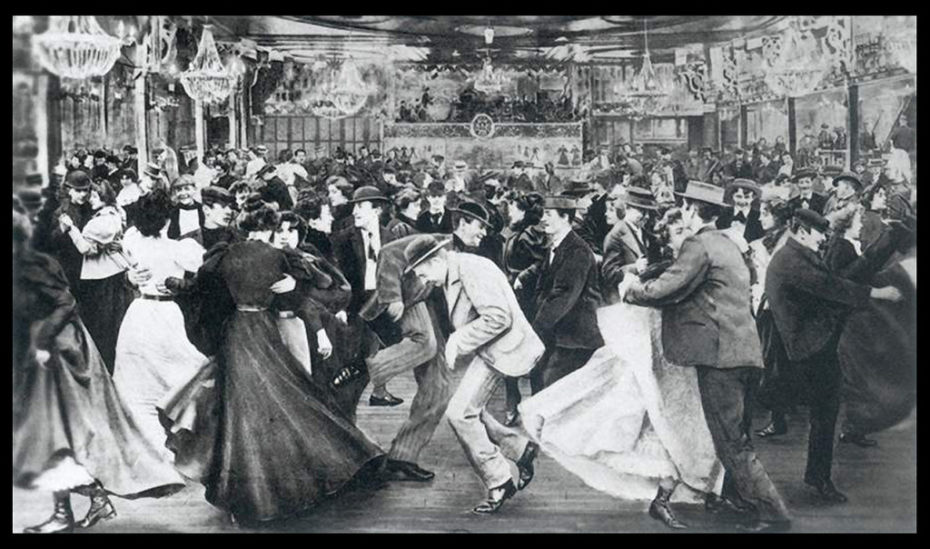
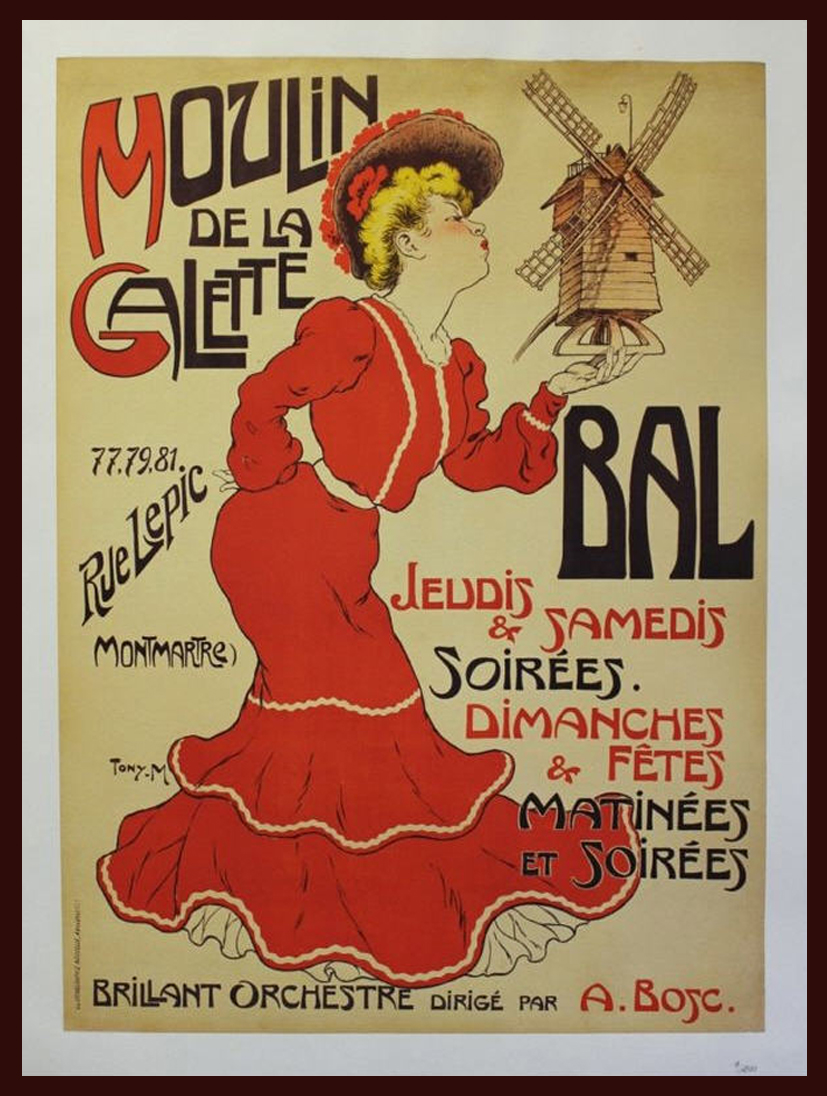
The windmill’s history however doesn’t begin as an artist’s muse, but rather as a fully functioning flour mill, which technically operated two mills, le Blute-fin and le Radet, owned by the Debray family. Both are still standing, but we’ll get to that in a moment. During the war, Prussian soldiers had stormed into Montmartre, killing the windmill’s owner, Pierre-Charles Debray who’d fought to defend his property. Legend has it that the soldiers nailed his body to the sails of the windmill.
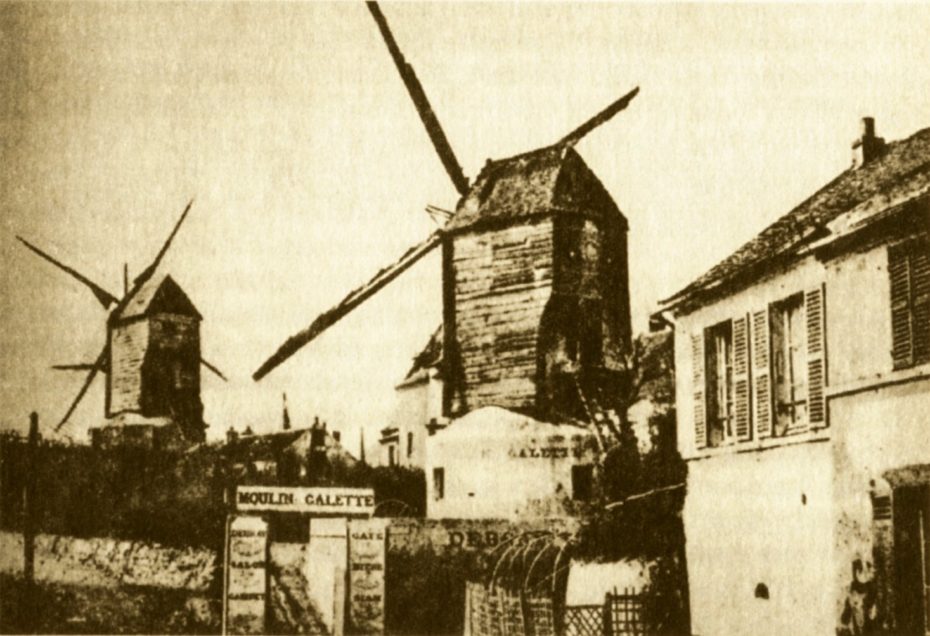
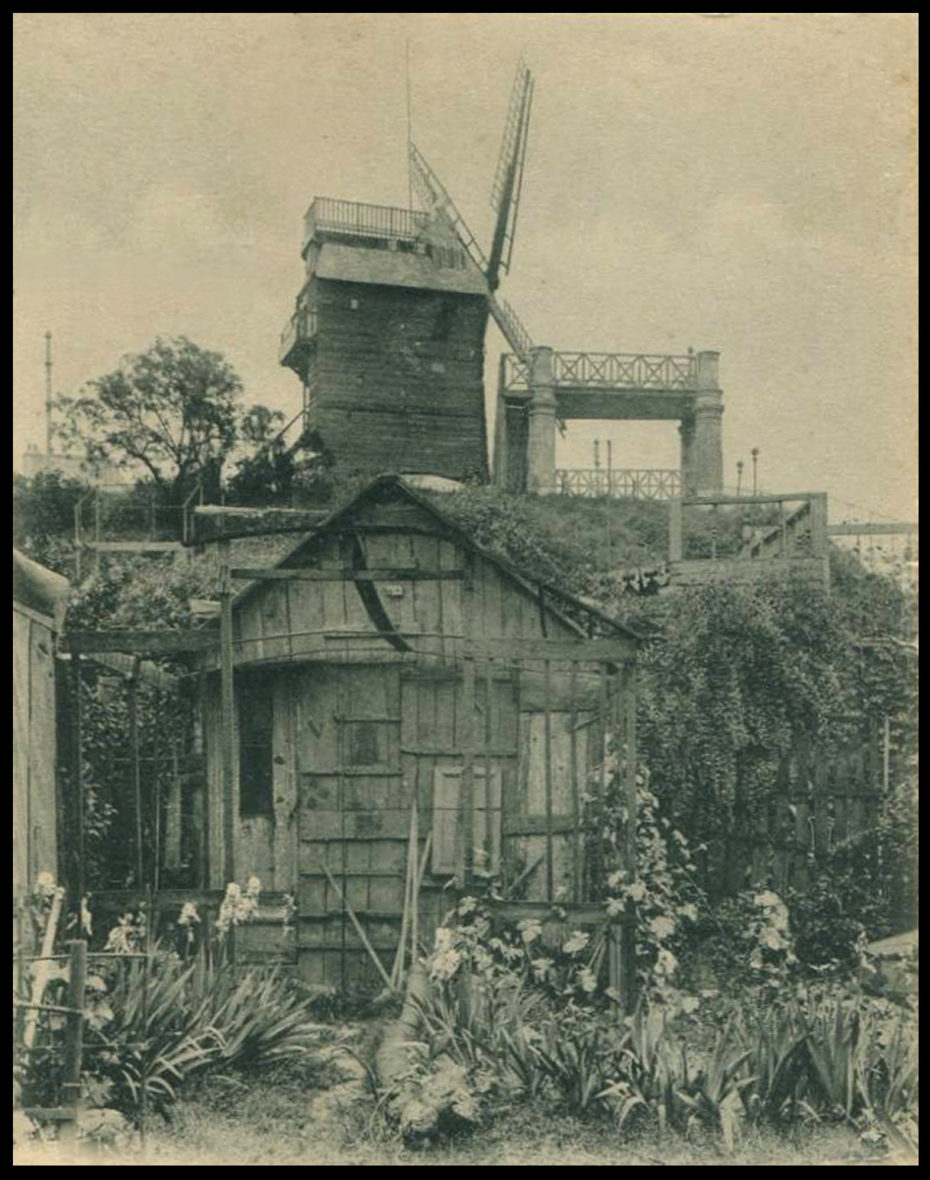
With the Franco-Prussian war over and technological innovation and the economy booming, La Belle Époque was in full swing and a new carefree and free-spirited period had descended on fin de siècle Paris…
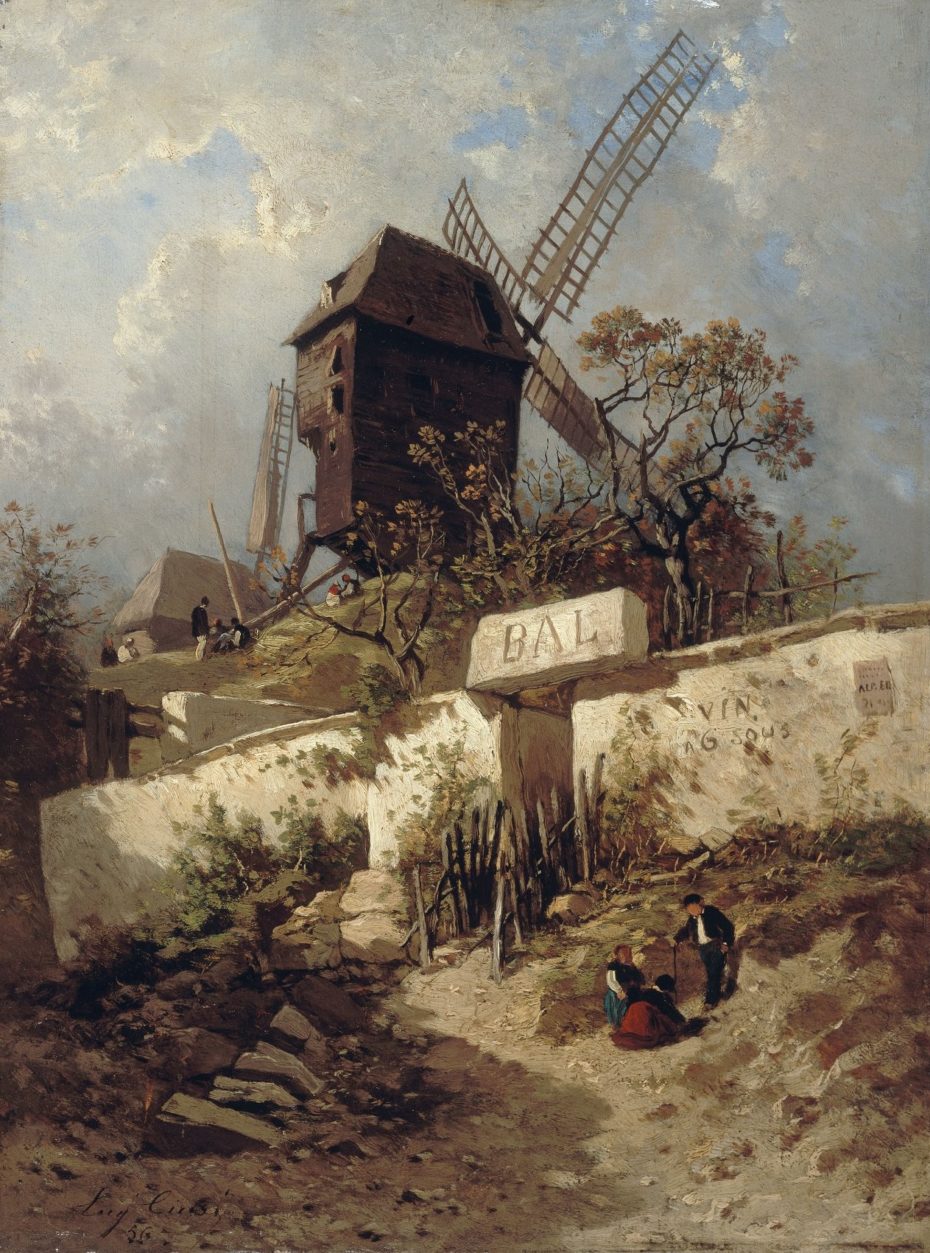
Following the siege of Paris by the Prussian soldiers and the new atmosphere of liberation, Pierre-Charles’ son, Nicholas Charles chose to reinvent the family business, turning it into a “guinguette” – think of it as the French equivalent to a summertime hoedown or a village ball, serving as a restaurant with lively music and dancing.
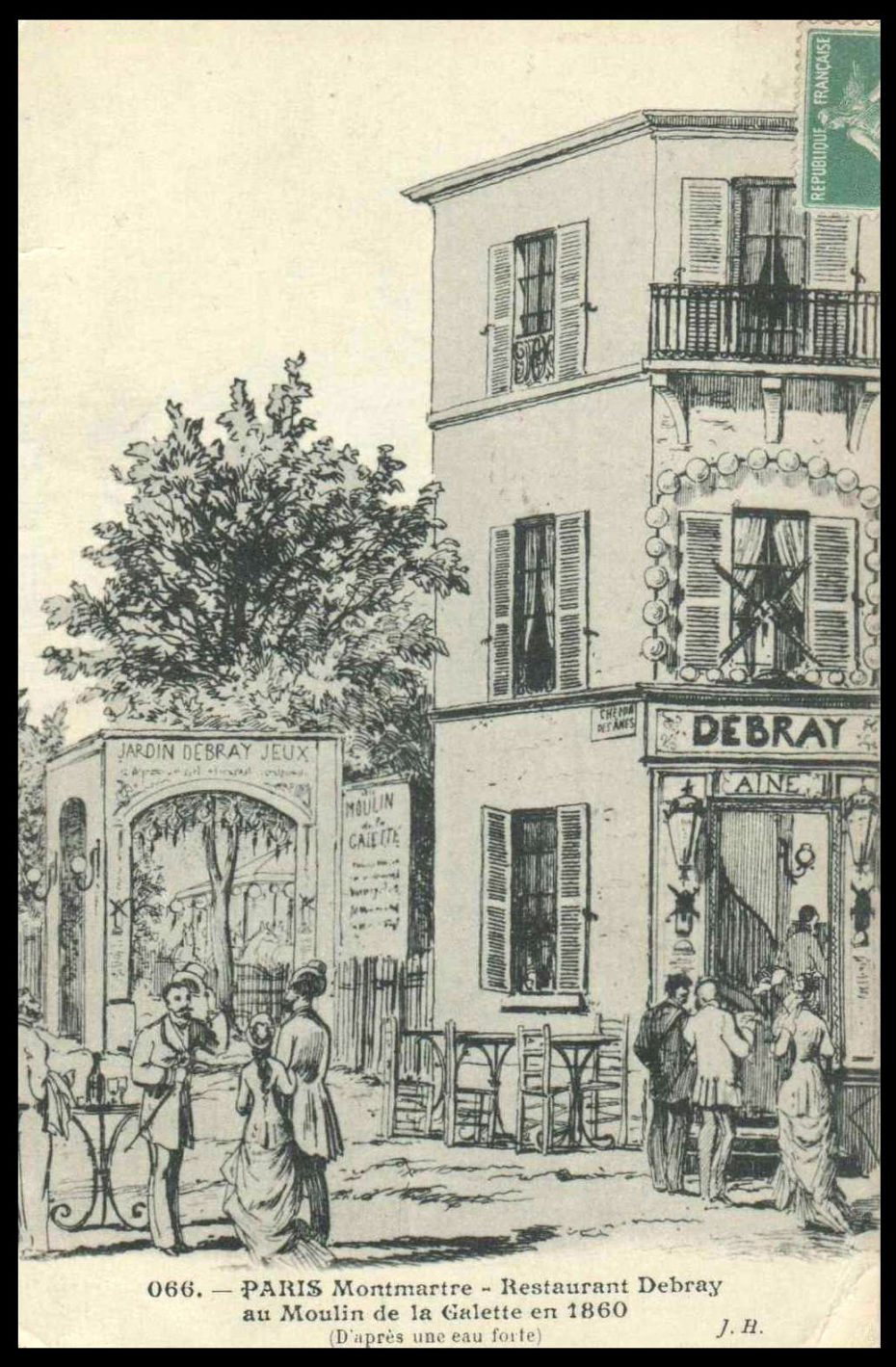
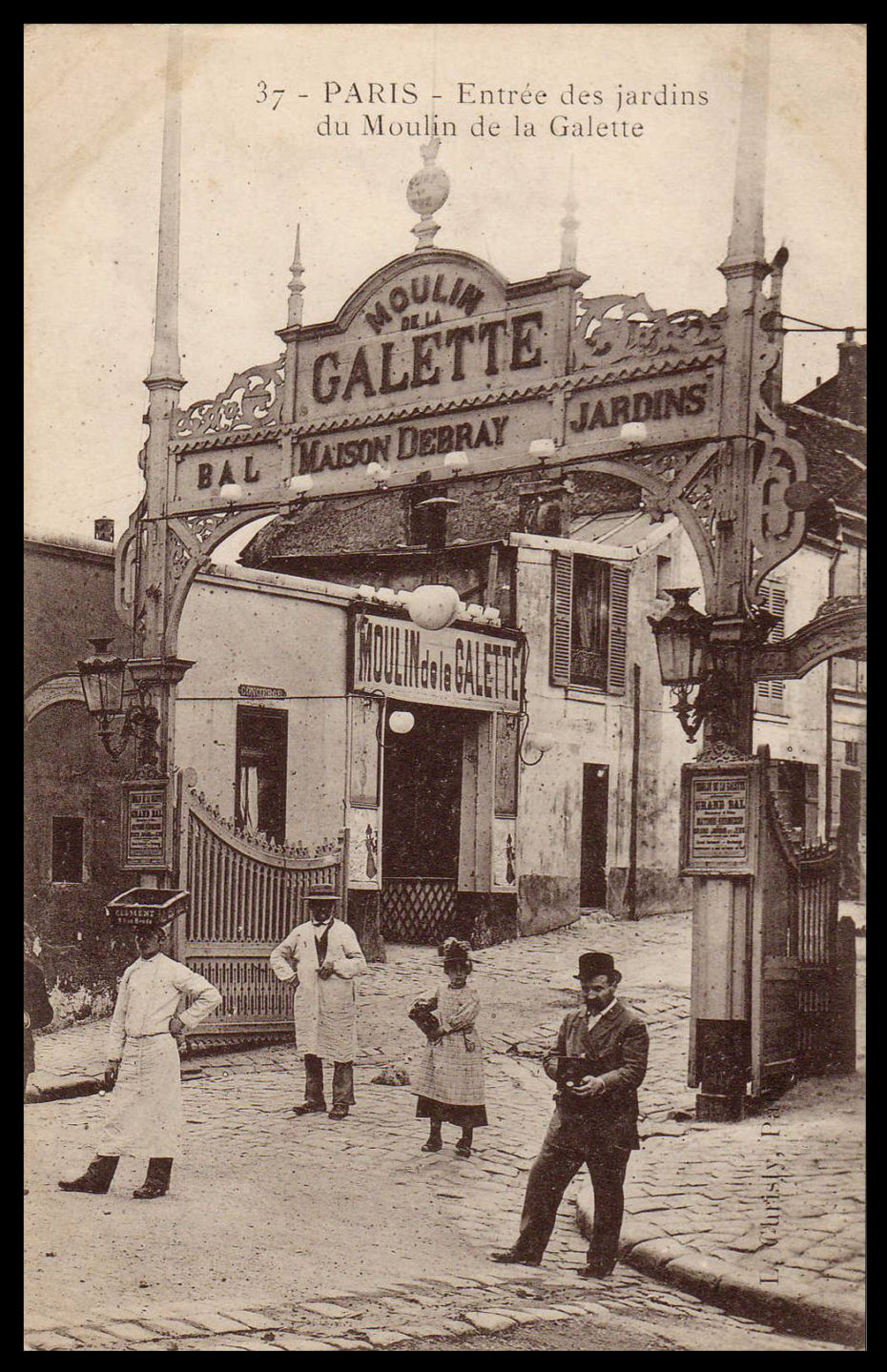
Up until 1860, Montmartre was a separate suburb from Paris, and a leafy one at that. With rolling vineyards and an array of windmills, Montmartre was a picturesque location. Whilst the scenery may have been a reason that artists such as Edgar Degas, Auguste Renoir and Gustave Moreau flocked to the hilly suburb, perhaps the reason they stayed was more to do with the tax-free wine that they had access to – as Montmartre wasn’t yet part of Paris, it was not subjected to the same tax laws.
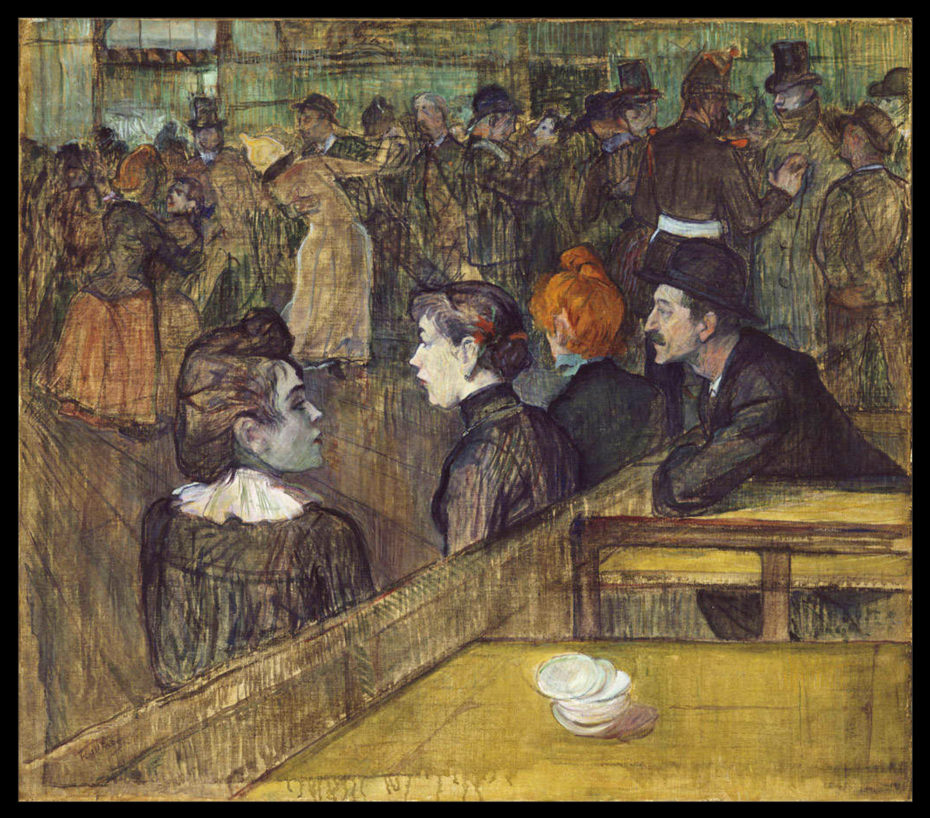
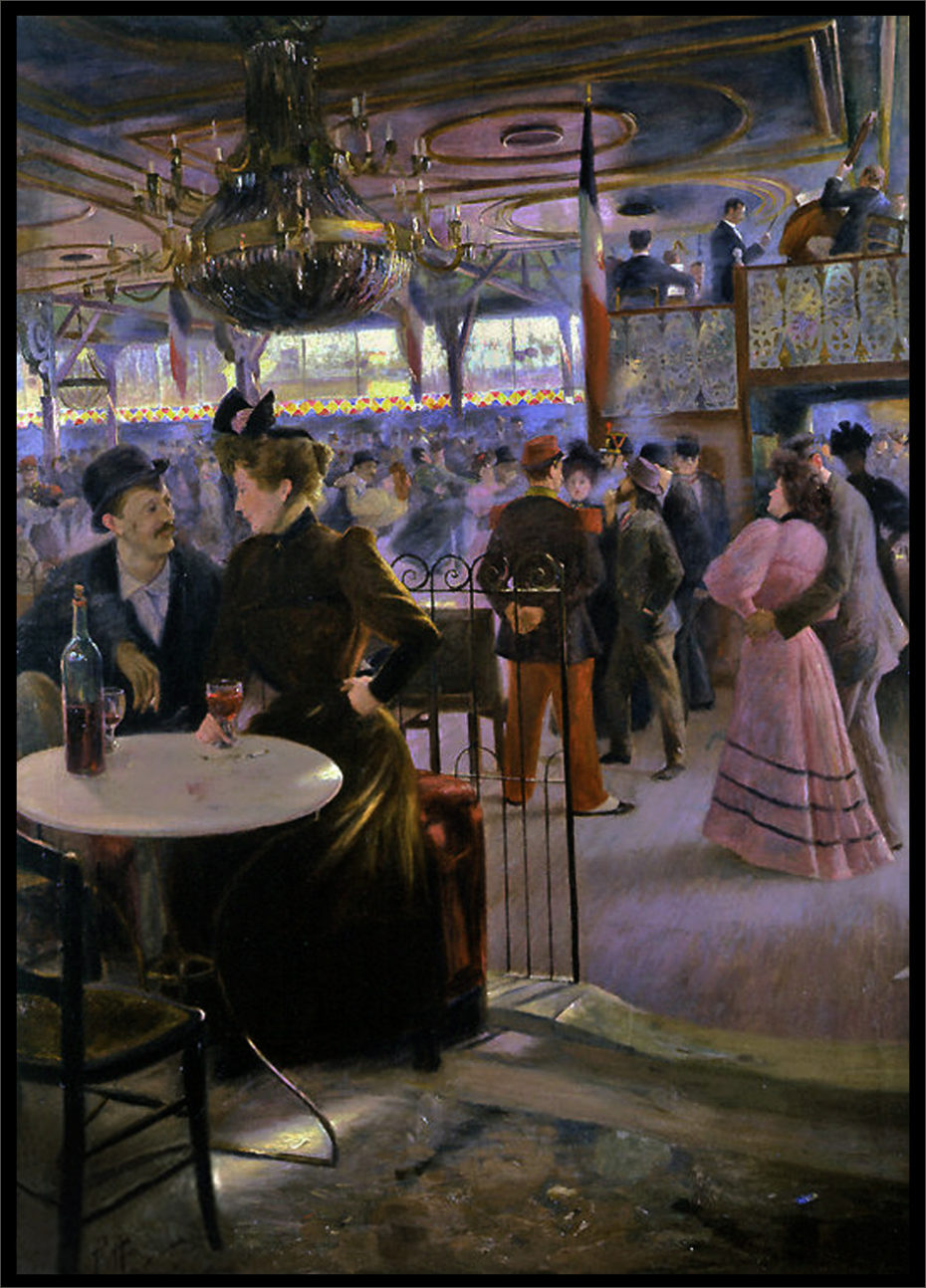
With a mostly working-class population and attractively low rents, the combination of affordable living, cheap wine and oeuvre-worthy scenery created the perfect conditions for a bohemian crowd of artists to flourish. And so, it’s no surprise that the artist crowd, fuelled by cheap wine and perhaps some other stronger substances, sought out entertainment within the village perched above Paris. Cabarets, dancing halls and bars begun to spring up, enticing revellers from all walks of life. In 1834, when the ball transitioned from an open air venue to a closed hall, The Moulin de la Galette became even more crammed with Parisians looking to party. Along with other dancing venues such as the Le Chat Noir and the Moulin Rouge, it helped earn Montmartre its reputation as a hedonistic paradise. Management tried to keep pimps and prostitutes out with strict dress codes, but working ladies could easily rent or borrow appropriate dresses for the weekend. Meanwhile, the mill continued to grind flour on weekdays, until the sails eventually stopped turning in 1914.
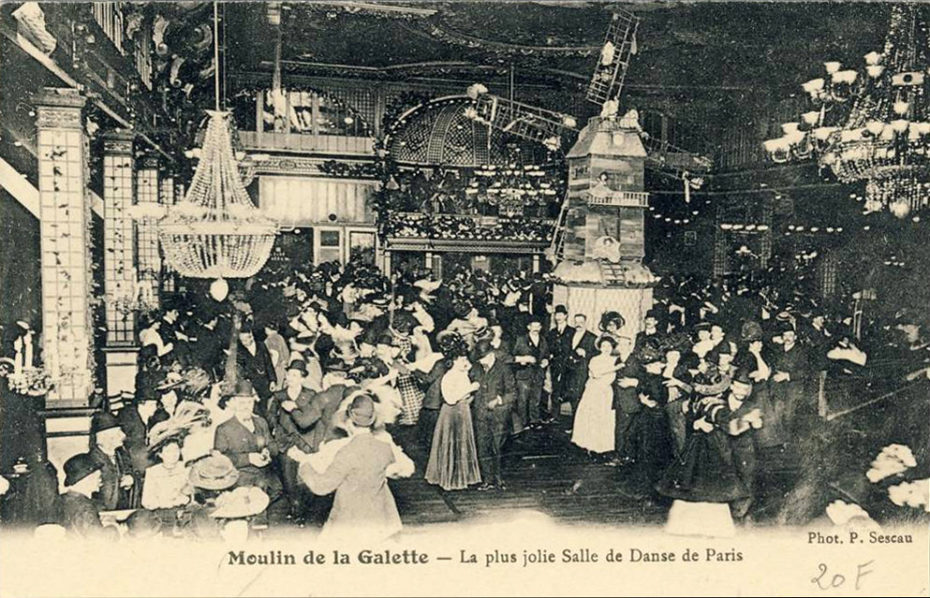
A famous songwriter of the time, André Gill wrote of the scene at the Moulin, “We crush our feet, we heckle, we scream, we get drunk.” French-cancan stars like, la Goulue, aka the ill-fated queen of Montmartre and Valentin le Désossé made their debut at the Moulin.
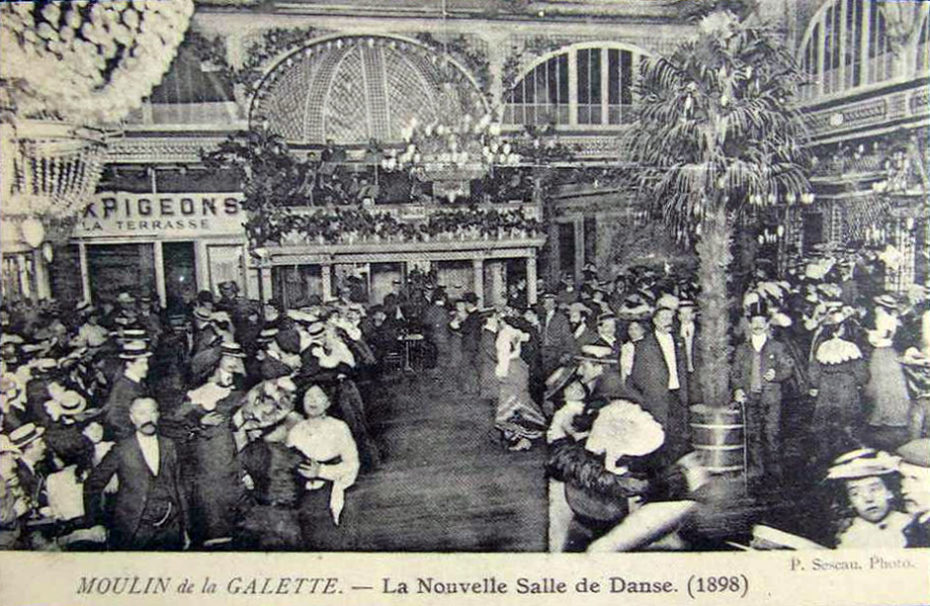
The Moulin de la Galette and its two windmills became an iconic symbol of Montmartre’s bohemian culture, painted not only by Renoir but also by Picasso, Santiago Rusiñol, one of the leaders of the Catalan modernisme movement. To this day is epitomises the Belle Époque and certainly has a fair few lurid stories to tell.
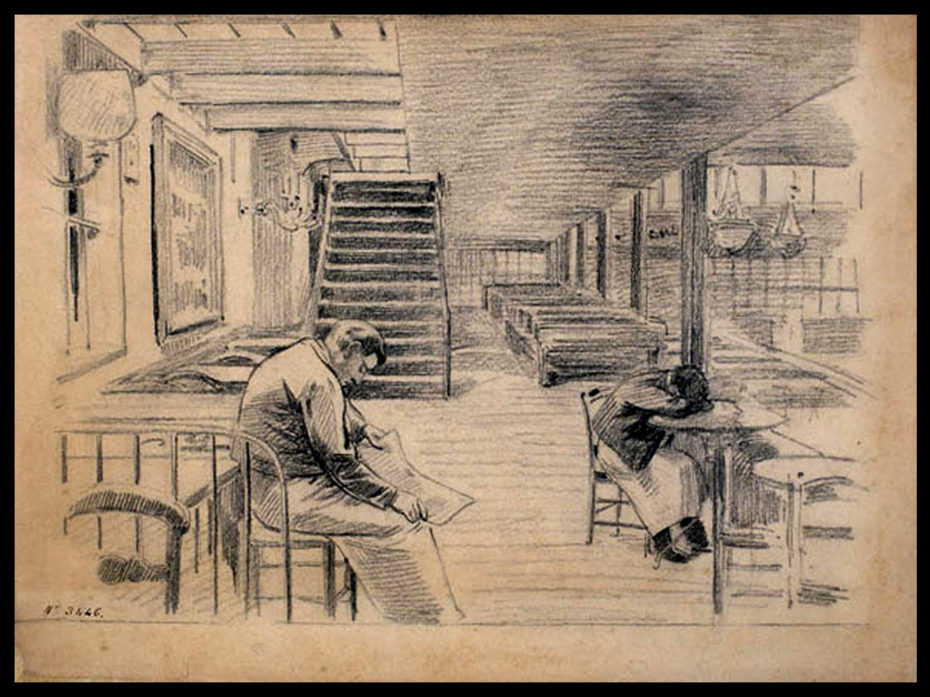
Once Montmartre became part of the city of Paris and the number of cabaret and guinguette venues began to multiply, Montmartre became a well-oiled entertainment machine, which chipped away at the fundamental reasons that the many artists had set up camp in the town.
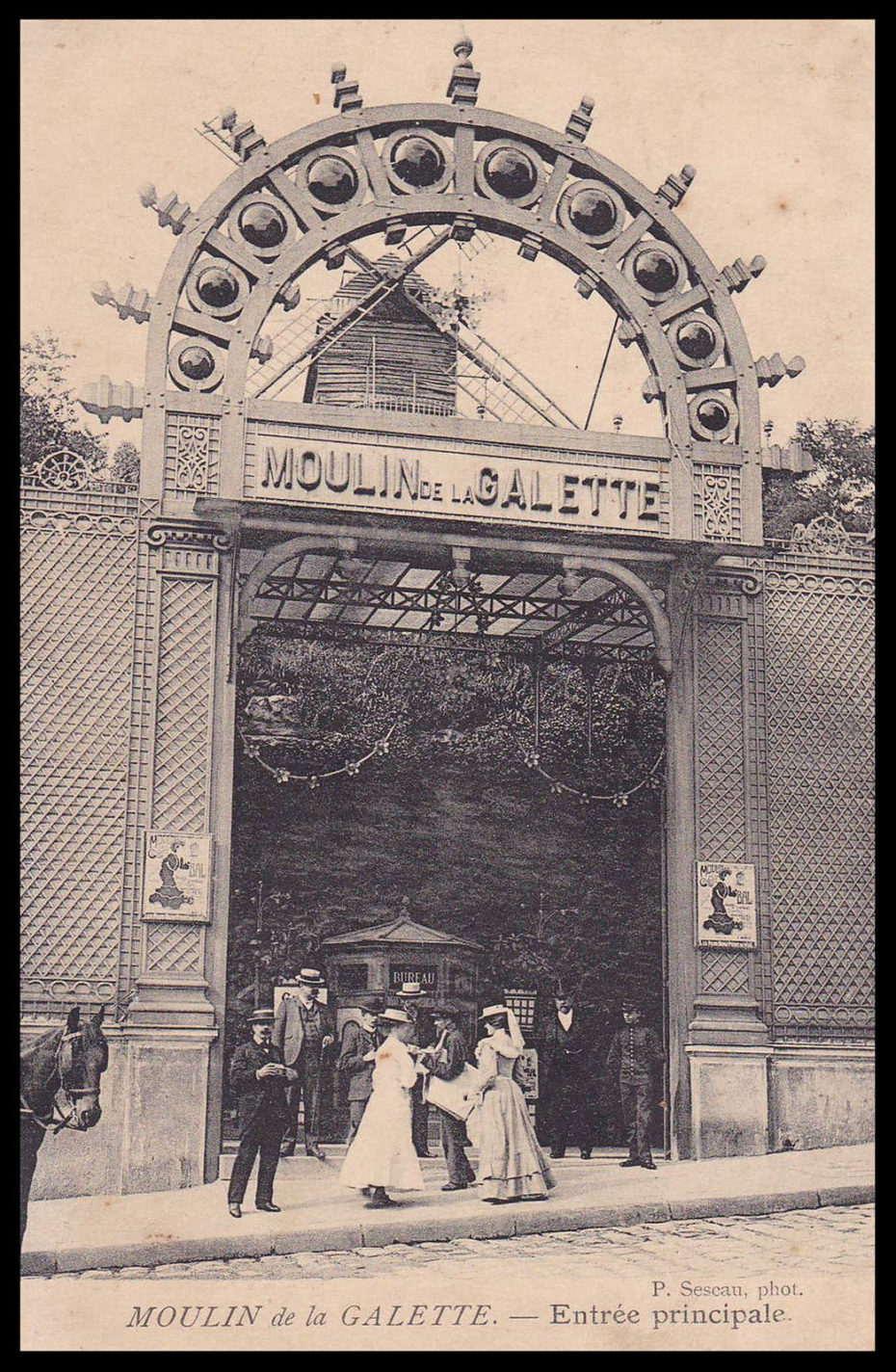
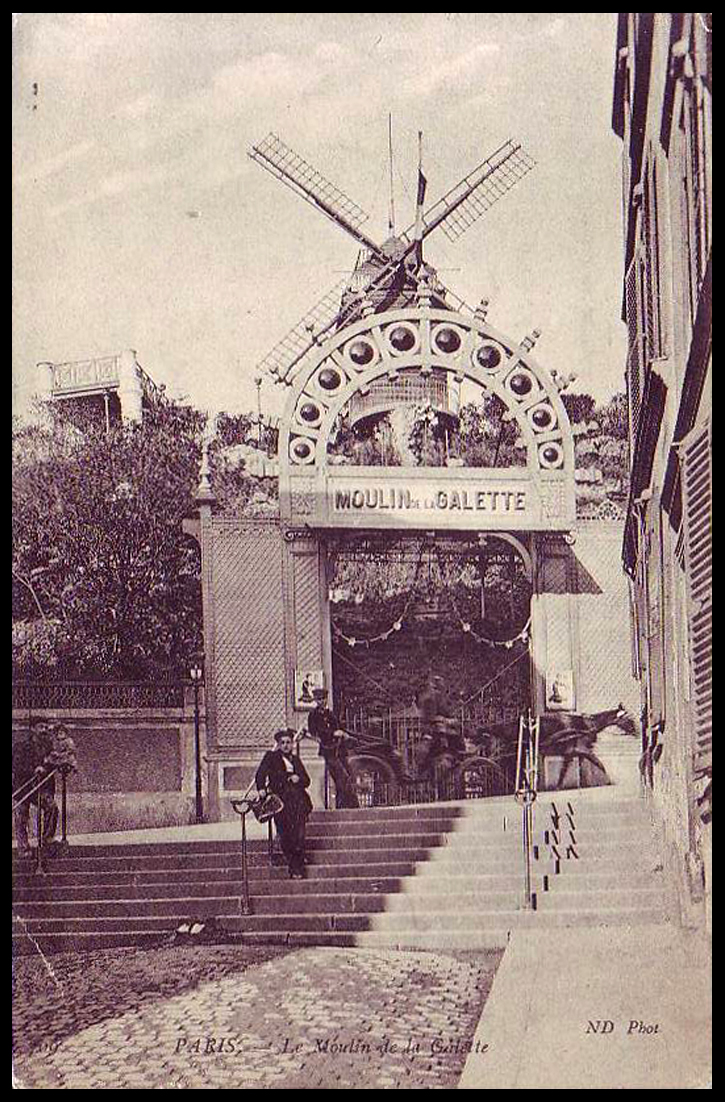
Little by little the artists left and as Montmartre was overtaken by the churning city of Paris, the Moulin de la Galette was once again forced to reinvent itself…
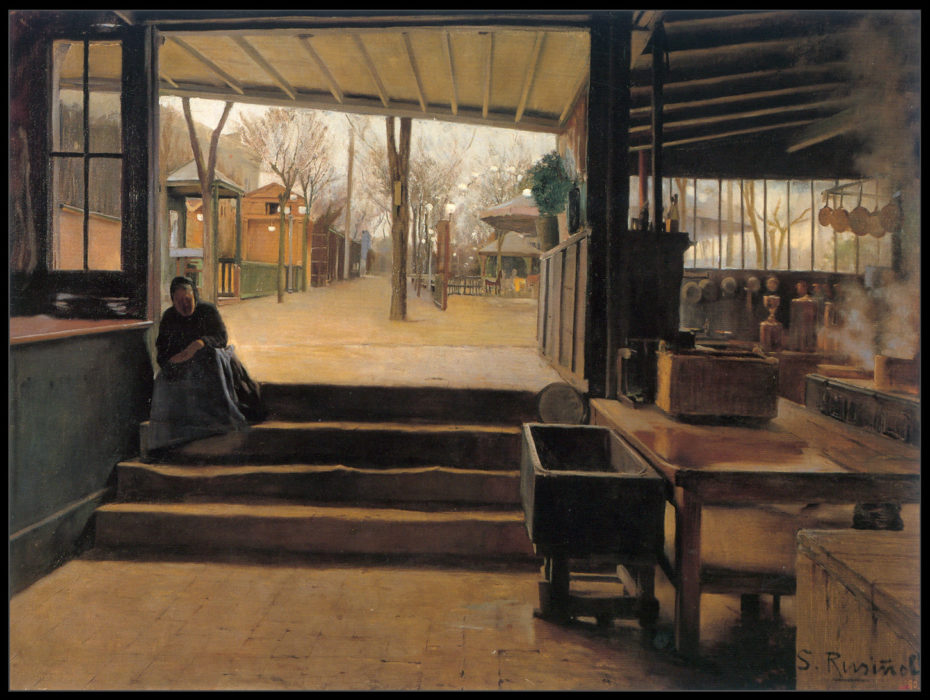
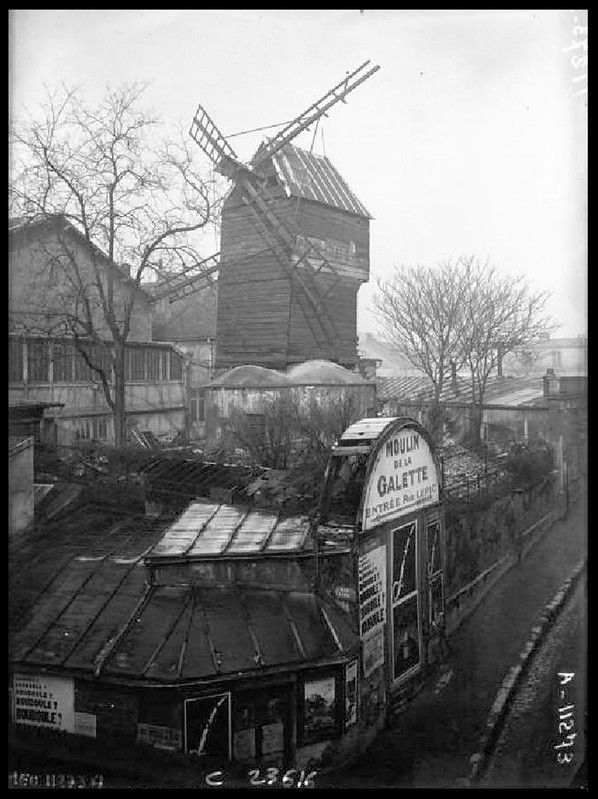
So what became of the legendary Moulin de la Galette as it was depicted in the postcards and impressionist paintings? In 1924, Pierre-Auguste Debray did a major revamp of the venue to entice new crowds up the hill. He emptied the Radet windmill of its mechanism and moved its shell to the corner of rue Girardon and Lepic, planting it on the roof of a new fine dining restaurant bearing the same name of the once legendary Belle Epoque dance hall.
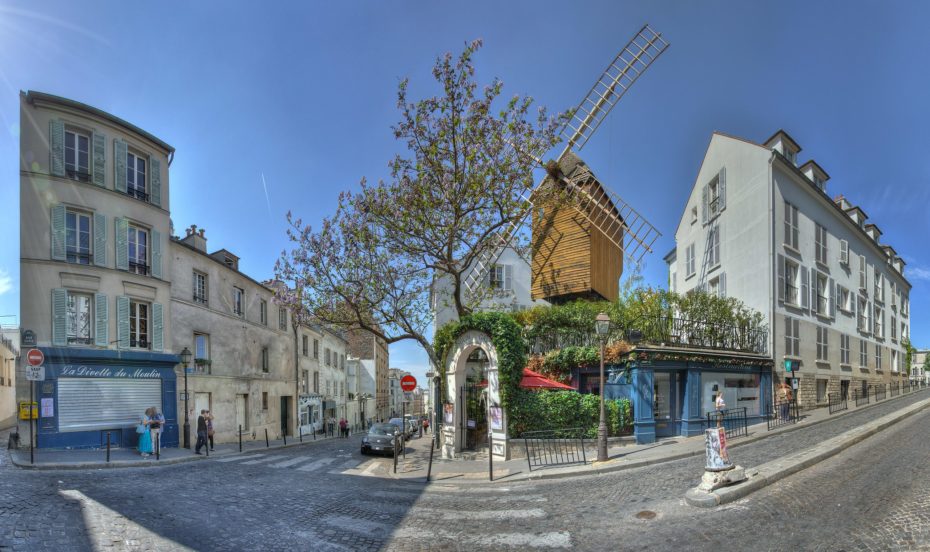
A restaurant still operates at this address (under new ownership) where the famous but tragic 1960s Franco-Egyptian singer, Dalida dined regularly beneath the static sails (there’s a table with her name plaque on it). The bistro is pretty much the only publicly accessible vestige of the original Moulin de la Galette. In the post-war years, one could still climb on the wooden terrace of the higher Blute-fin windmill for a view of the whole of Paris, but Renoir’s festive scenes would have already been a distant memory.
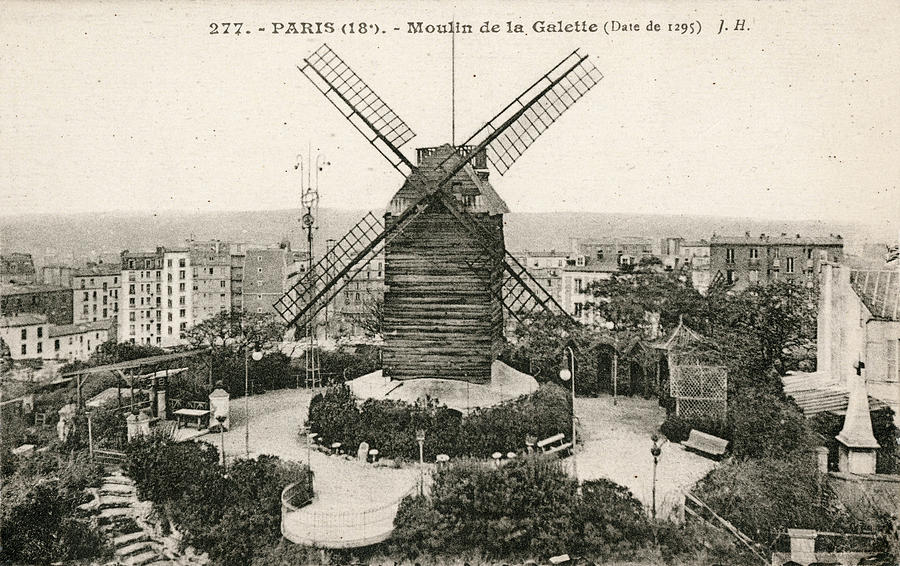
In the 1950s, the property was used as a public radio and television studio and became private property in the 1970s, at which time the windmill and the machinery inside it was restored. Blute-fin is now the last windmill of Paris in working order, but unfortunately, we can only glimpse it from rue Lepic, unless invited by a resident.
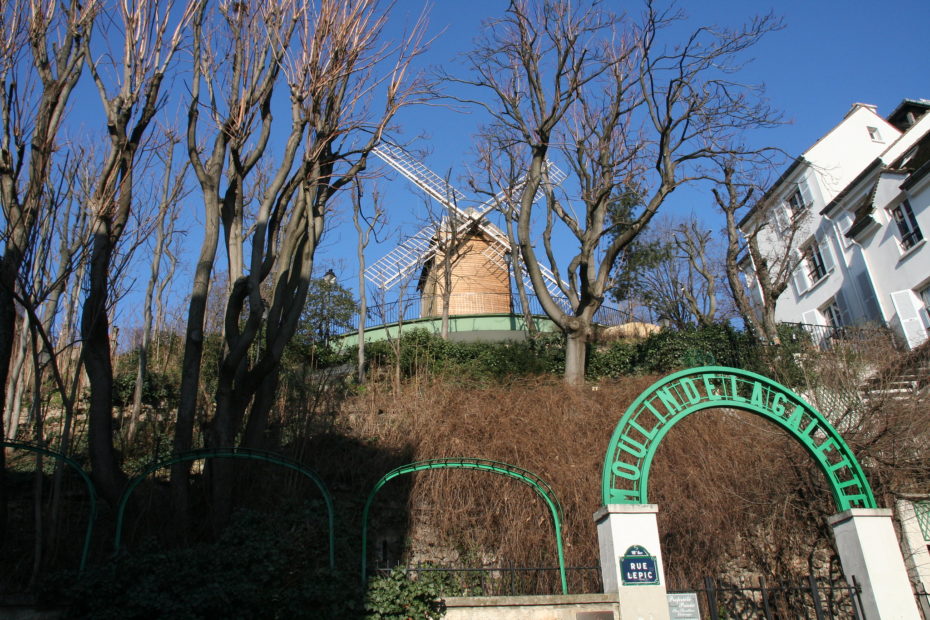
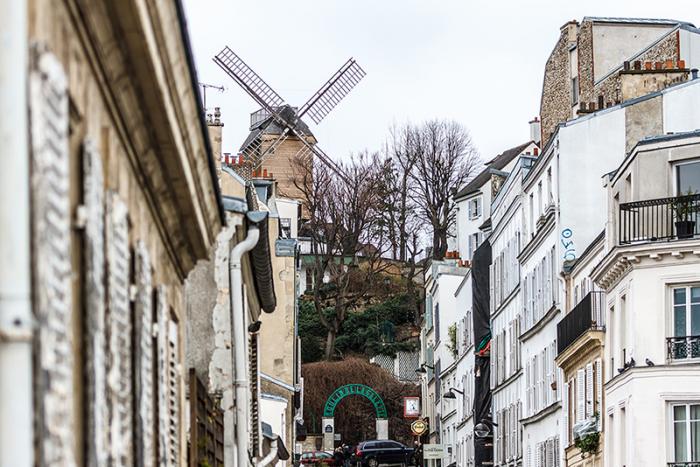
No longer accessible to the public, it’s best spied in winter; in summer it is well hidden behind those trees that gave Renoir that perfect dappled light.
See it from above on Google Earth here.
Find more fabulous pictures from the Belle Époque at the Moulin de la Galette here.


